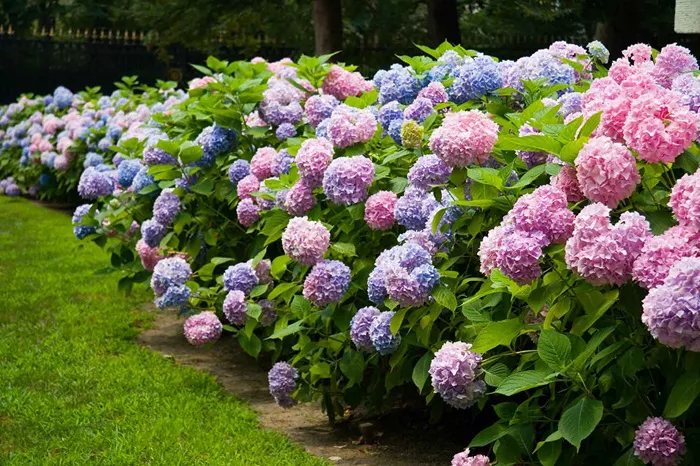Hydrangeas are beloved for their stunning blooms, which can transform any garden into a vibrant oasis. However, many gardeners find themselves frustrated when their hydrangeas fail to produce an abundance of flowers. Fortunately, there are several strategies you can employ to encourage more blooms on your hydrangea plants. This article will explore essential care tips, pruning techniques, and environmental factors that influence flowering, helping you enjoy a lush display of blooms in your garden.
Understanding Hydrangea Varieties
Before diving into care techniques, it’s crucial to understand that different types of hydrangeas bloom differently. The most common types include:
Hydrangea macrophylla (Bigleaf Hydrangea): Produces large, colorful blooms and can be either mophead or lacecap varieties. It blooms on old wood, meaning last year’s growth.
Hydrangea paniculata (Panicle Hydrangea): Known for its cone-shaped flower clusters, this type blooms on new wood, producing flowers from the current season’s growth.
Hydrangea quercifolia (Oakleaf Hydrangea): This variety features unique foliage and blooms on old wood.
Understanding which type you have is essential for proper care and pruning techniques, as it directly impacts flowering.
Optimal Planting Conditions
To encourage abundant blooms, start with the right planting conditions:
Location: Hydrangeas thrive in partial shade. While some varieties can tolerate full sun, too much direct sunlight can scorch the leaves and reduce flowering. Aim for morning sun and afternoon shade for optimal growth.
Soil Quality: Hydrangeas prefer well-draining, loamy soil rich in organic matter. Conduct a soil test to check pH levels; most hydrangeas prefer slightly acidic to neutral soil (pH 5.5 to 7.0). You can amend your soil with compost or peat moss to improve its quality.
Watering: Consistent moisture is key. Hydrangeas need regular watering, especially during dry spells. Aim for about an inch of water per week, either from rainfall or irrigation. However, avoid waterlogged soil, as this can lead to root rot.
Proper Fertilization
Fertilizing your hydrangeas correctly can significantly boost their flowering potential:
Timing: Fertilize in early spring as new growth begins. This is when the plant is preparing to bloom.
Type of Fertilizer: Use a balanced, slow-release fertilizer specifically formulated for flowering plants. Look for a formula with a higher phosphorus content (the middle number on the fertilizer bag) to encourage blooming.
Application: Follow the manufacturer’s instructions for application rates. Over-fertilizing can lead to lush foliage at the expense of flowers.
Pruning Techniques
Pruning is a critical factor in promoting blooms on hydrangeas, but the timing and technique depend on the variety:
For Bigleaf Hydrangeas: Prune immediately after flowering in late summer or early fall. This allows the plant to set buds for the following year without disrupting the blooming cycle.
For Panicle Hydrangeas: These can be pruned in late winter or early spring before new growth begins. You can cut them back significantly, as they bloom on new wood.
For Oakleaf Hydrangeas: Prune after flowering, similar to Bigleaf varieties. Remove dead or damaged wood and shape the plant as needed.
Controlling Pests and Diseases
Healthy plants are more likely to produce abundant blooms. Monitor your hydrangeas for common pests such as aphids, spider mites, and scale insects. If you notice any infestations, treat them promptly with insecticidal soap or neem oil.
Additionally, watch for signs of diseases like powdery mildew or root rot. Proper spacing, good air circulation, and avoiding overhead watering can help prevent these issues.
Encouraging Bloom Color
If you have Bigleaf hydrangeas, you can also influence the color of their blooms by adjusting the soil pH:
Blue Blooms: For blue flowers, lower the soil pH by adding aluminum sulfate or sulfur.
Pink Blooms: For pink flowers, raise the pH with lime.
Keep in mind that this adjustment can take time, and the results may not be immediate.
Conclusion
Getting more flowers on your hydrangea is achievable with the right care and attention. By understanding your specific hydrangea variety, providing optimal planting conditions, fertilizing appropriately, pruning correctly, and monitoring for pests and diseases, you can create a thriving plant that produces stunning blooms year after year. With patience and proper care, your hydrangeas will reward you with an abundance of flowers, adding beauty and charm to your garden.


